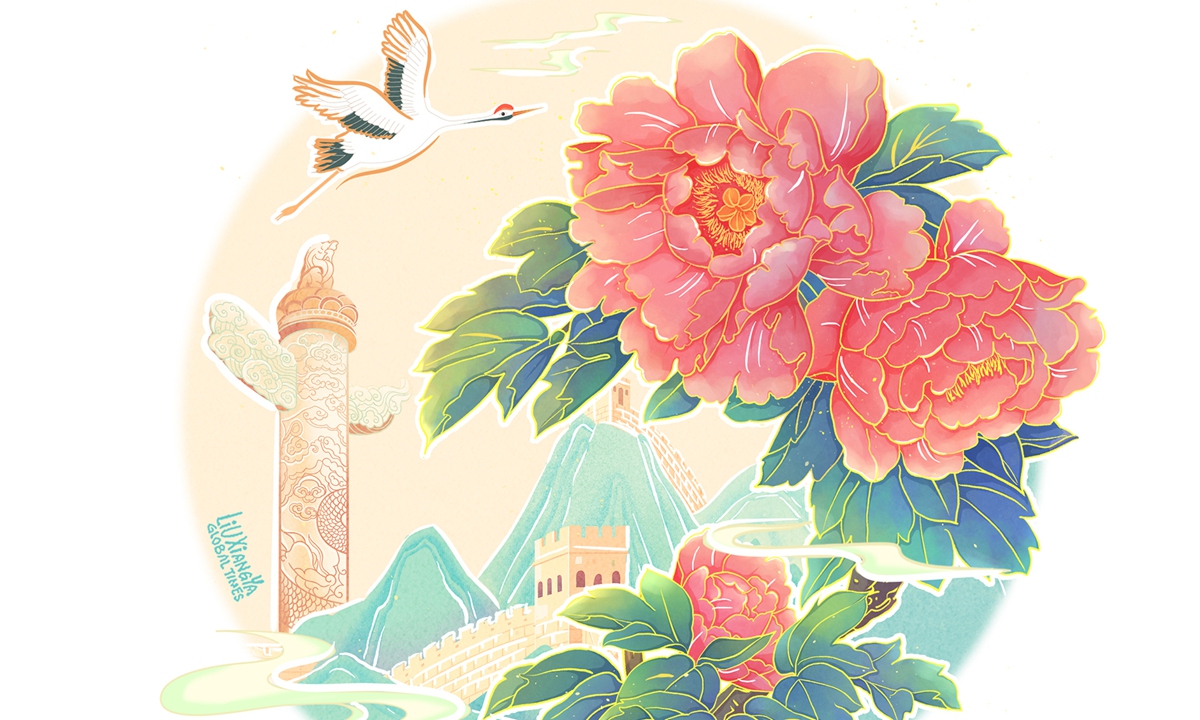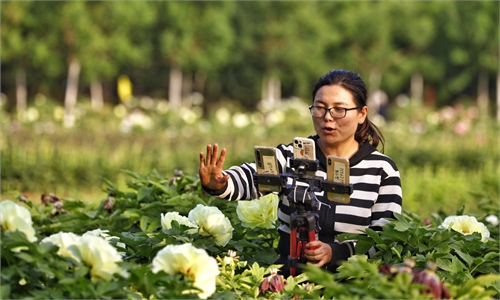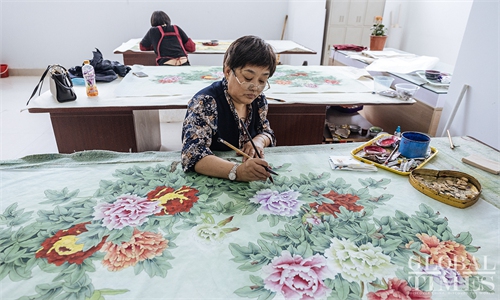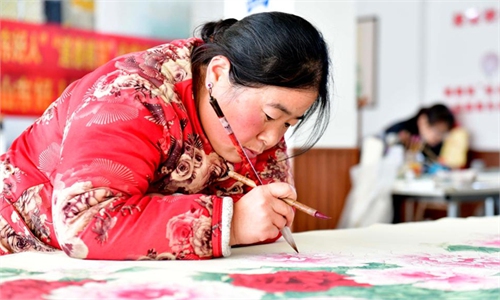ARTS / CULTURE & LEISURE
Peony conveys Chinese values to world

Illustration:Liu Xiangya/GT
Flowers have long been symbols of civilizations worldwide. Every country has its own national flower.China boasts abundant floral resources, yet, peony is the one that represents the Chinese nation the most, and the flower also shows the country's unique culture.
Flowers' symbolic meanings promote cross-cultural exchanges. Their aesthetics can also arouse people's consensus regardless of cultural differences.
Why does the peony look so unique in the eyes of Chinese people? In our tradition, the flower peony is often seen to metaphorically describe Chinese people's shared aesthetic tendencies.
A peony flower looks elegant and poised. It carries auspicious meaning to Chinese people.
When was the peony first praised by Chinese people? The answer to the question can be found in ancient poems created by masters like Bai Juyi and Liu Yuxi, both renowned poets in the Tang Dynasty (618-907). Liu once described the color of the peony as the "color" of the prosperous Tang.
Therefore, there was a metaphorical relationship between the "peony" and the "Tang Dynasty." Since then, the flower has been an embodiment of the prosperous Chinese nation. In modern times, "peony culture" continues to play a major role in bringing Chinese values to the world.
To be specific, discourse on China's peony culture can be established within a multidimensional narrative system that includes aspects such as culture, ecology, industrial development and urban development.
First of all, it is the "peony" to China's cultural narrative. We should search for more connections between the flower and China's myths, legends, historical characters, classic literature and so forth. Such connections lead us to explore the deeper spiritual values behind the symbol.
Second, the peony holds importance for China's industrial development. The prosperity of peony culture and China's industrial development has an organic interactive relationship. Peony is a treasure that has not only high ornamental value, but also outstanding medicinal, culinary, and health benefits.
The wise and diligent Chinese people have developed the rich industrial value of peonies through innovative practices. The deep processing centered around peonies has become a high-tech and high value-added industrial chain in China. Peonies have been transformed into products such as pastries, essential oils, makeup products as well as handicrafts.
Moreover, to some extent, the development of peonies is also an epitome of China's developing ecological narrative. Green mountains and clear waters are the country's invaluable assets. Taking Heze in East China's Shandong Province. The peony culture has intertwined itself into the local culture and industry.
The rise of the peony industry also reflects a city or a region's efforts in environmental protection.
Furthermore, the peony culture is also important to China's urban narrative. Peony can serve as a national representative as well as an urban city's iconic landscape. The integration of peony culture with an urban area's unique aesthetics has formed various regional landscapes. The regional cultural characteristics of peonies can be combined with other industries like cultural tourism.
No matter if it is peony planting or industrial activities inspired by the flower, people are always at the center of China's peony culture. In addition to emphasizing historical narratives, telling legendary stories of literati and peonies, it is even more important to focus on the narrative of today, telling stories about people who engage in peony culture, for example, the planters.
I call this the "people narrative" in peony culture. We should use peonies as a medium to explore the ways humans and nature interact, ways of interpersonal communication and emotional expression.
Through such different narrative patterns, we hope the cultural identity of the peony can be polished to increase the international influence of China's peony culture.
The rise of audio-video digital productions has opened up new means in the information age. They can help increase China's international influence. So, the international promotion of China's peony culture should include video and digital productions. Through visual languages that combine images, sounds and words, peony culture can be better understood by overseas audiences. Documentaries like The Journey of Chinese Plants are a good example.
We should also focus on positioning peony culture as a Chinese IP. It would be a good idea to create combinations such as "peony+cultural tourism."
Telling a good story about peonies is not a solo performance that belongs to any particular community but to all of us. To expand the international influence of peony culture and make the world fall in love with peonies, we should borrow the voice of multiple media organs such as new media sites and also "vloggers."
The most important thing is that the story of peonies should be empathetic, with the goal of forming cultural, emotional, and value resonance and thus deepening overseas audiences' positive feelings for Chinese culture.
We hope that the elegant peony continues to promote the spread of China's modern civilization.
The author is an associate professor with the Communication University of China. life@globaltimes.com.cn



